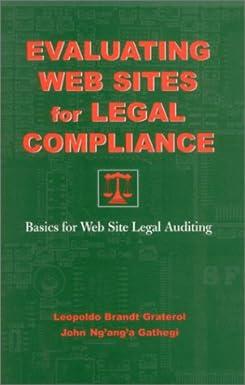Question
Taxpaying and Flow-Through Entities Different types of entitiessuch as individuals, partnerships, Subchapter S corporations, not-for-profits, and corporationsin the federal income tax system are split into
Taxpaying and Flow-Through Entities Different types of entitiessuch as individuals, partnerships, Subchapter S corporations, not-for-profits, and corporationsin the federal income tax system are split into two distinct groups: taxpaying entities and flow-through entities. Taxpaying entities must pay income taxes on their taxable income; however, flow-through entities can limit taxation by transferring their income (flowing through) to a taxpaying entity such as an owner and/or an investor. In both cases, income must still be calculated for the purpose of eventual taxation. Select one of the following entities: individuals, partnerships, Subchapter S corporations, not-for-profits, or corporations. Consider the following questions: How do taxpaying and flow-through entities compute income? What is the definition of income by the IRS? With these thoughts in mind: Post by Day 3 an explanation of the entity you selected and its determination of income. Analyze the difference between income for the IRS and income for accounting as it relates to the entity you selected. Be sure to support your response with references to this weeks Learning Resources.
Step by Step Solution
There are 3 Steps involved in it
Step: 1

Get Instant Access to Expert-Tailored Solutions
See step-by-step solutions with expert insights and AI powered tools for academic success
Step: 2

Step: 3

Ace Your Homework with AI
Get the answers you need in no time with our AI-driven, step-by-step assistance
Get Started


